Are you looking for a contractor?
Submit our quick form and get quotes now!
Table of Contents
9 min read
What Best Suits Your Project: A Sunroom or Veranda?
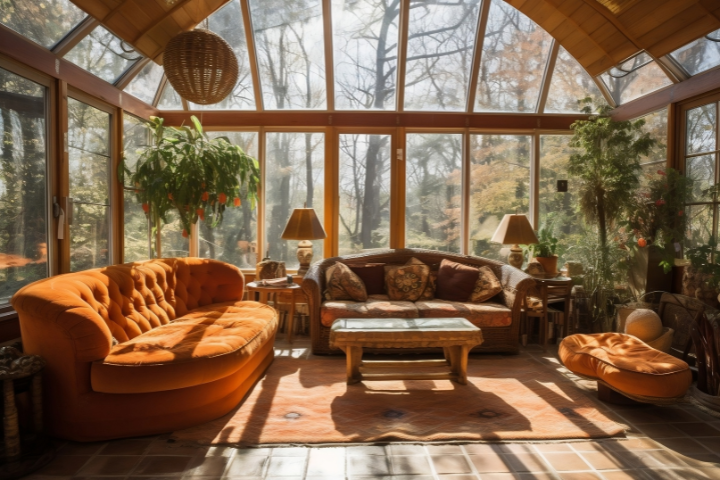

9 min read
What Best Suits Your Project: A Sunroom or Veranda?
Exterior renovationsWhat Best Suits Your Project: A Sunroom or Veranda?
Are you looking to add to your current living space? Whether it’s a sunroom or a veranda, they’re both deemed great options. The question is, what’s the difference between the two?
What is the difference between a sunroom and a veranda?
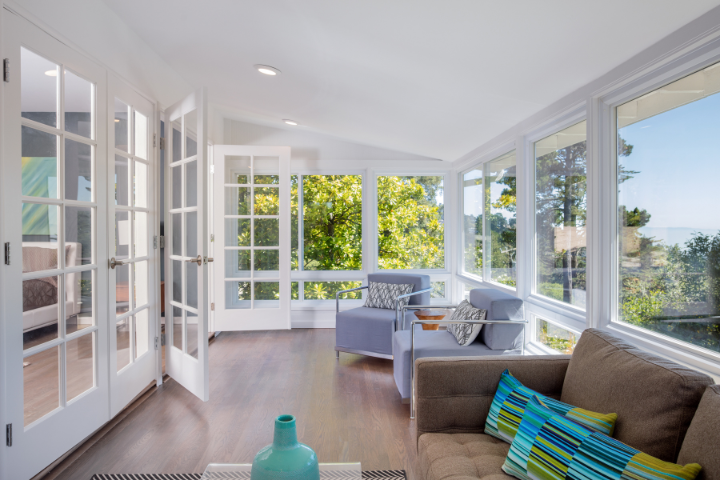
According to a certain provincial home builders’ association—the APCHQ to be more precise—a veranda differs from a sunroom on account of the following:
It's not heated
It's not insulated
It's not a year-round structure
Based on the three above-mentioned factors, a veranda is technically not an integral part of a home, whereas a sunroom is:
Heated
Insulated
Used year-round
Therefore, sunrooms are regulated by the National Building Code (NBC), since they're considered as an inherent part of a structure, unlike verandas.
Sunrooms vs. Verandas: The Basics and Canadian Specificities
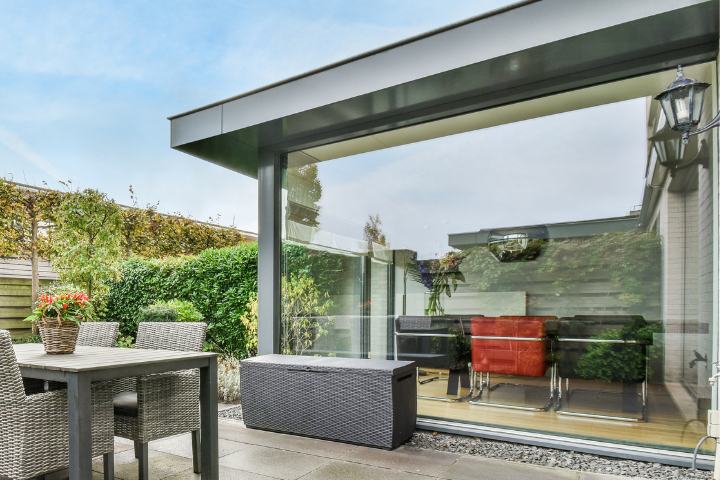
Thermal Insulation
Before delving into the insulation of it all, consider its positioning. A north-facing sunroom is highly recommended, but to ensure its year-round use without needing to bundle up like a starfish, you’ll have to establish a heating budget for the winter season.
Another way to go about it is to still favour a north-facing position but angled toward the east or west. These are best if you’re looking to have an indoor garden.
In any case, sunroom insulation is mainly done at floor level and within the structure itself. Typically, a sunroom or veranda floor isn’t built atop solid ground. As such, drafts coming in through the structure will significantly cool the room during the winter.
To offset this issue, while still adhering to guidelines established by the building code for exposed floors (insulation of at least R-29.5), adding at least 5 inches of sprayed urethane is a must.
Regarding the rest of the sunroom, favour:
Wood
Double- or triple-glazing
Double-glazing is great as it allows for plenty of daylight to filter in, yet its thermal resistance (R-value) only ranks between 3 and 3.8. On the other hand, triple-glazing being thicker doesn’t allow for as much daylight to seep in, but its R-value is somewhere between 7 and 8.
Nonetheless, even with great insulation, you might not be able to store as much heat in a north-facing sunroom.
Local Regulations
To begin, note that a sunroom can’t be built by just any available contractor. The latter must hold a general or specialized contractor licence, issued by the Building Code Commission (BCC).
Then, a sunroom being an extension of an existing structure, it is, as we’ve already stated, subjected to building code regulations. Therefore, depending on the type of sunroom you wish to have built, it can be:
Combustible (if your home was built with combustible materials)
Fireproof
Equipped with a fire escape
Fire protected
Freezeproof
Of habitable conditions (height under the cornice, electrical outlets, heating, etc.)
It’s also not limited to those mentioned above, as building a sunroom might mean making structural changes to your home's existing structure. This isn’t an unlikely situation because you’re basically adding square footage.
On top of that, there are local regulations. Inquire with town hall or city authorities to better understand all standards to comply with.
Here are some of the general rules to abide by:
You must get a building permit or certificate of authorization
The sunroom or veranda must be built on the first floor
The structure can’t exceed 60% of your home's rear façade
The total surface area must be at least 70% glazed
Must be built using the same materials as the dwelling’s first floor
Seasonal Use
With what we just detailed up until now, you already have a better grasp of how a sunroom differs from a veranda—the former is heated and insulated. In other words, by features rendering it for year-round use.
However, by further researching sunrooms, you’ll note that there are two different models:
4-season sunroom
3-season sunroom
The difference, you ask? A 3-season sunroom has no foundation, nor double-glazing or insulation. Basically, it's not a typical “sunroom” by any stretch of the imagination, it’s more like a veranda at this point. Legally speaking, you don’t need to request a building permit from your city.
Uncover what you should consider when choosing your sunroom. (English version to come.)
What You Should Know About Building a Sunroom
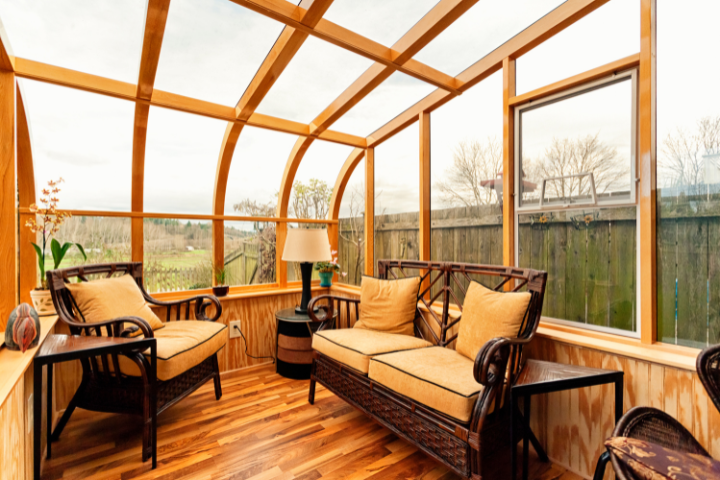
Wood-Frame Construction: A Sought-After Option
Most sunrooms are built with wood or aluminum. Most often, these materials are used together.
Wood is favoured by a lot of homeowners for its aesthetic aspect and longevity, provided it’s well-maintained. Before landing on wood, ask yourself how much time you have, every year, to dedicate to maintaining a wooden structure.
Key Constructions Steps: How to Correctly Build a Sunroom
Step 1: Comply with regulations
Whether they be inscribed in the Construction Code or your city’s regulations, note that sunroom-specific guidelines work based on the structure's size, the position of your house, as well as your area of residence.
You will have to stay within the bounds of the building permit you've received. Otherwise, you risk making yourself vulnerable to legal action from municipal authorities.
Step 2: Excavate
A 4-season sunroom requires a concrete foundation. In certain provinces and depending on where you live, the foundation must be dug 3’11” to 5’ deep, to ensure the structure withstands freeze.
Step 3: Pour structural slab
Sonotube piles are used to build a lot of outdoor living structures, like decks and balconies. In terms of sunrooms, you can also use these piles; however, it’s best to hire the services of an engineer.
While double-glazing and a lack of insulation make for a rather lightweight 3-season sunroom, the same can’t be said about a 4-season structure. Therefore, based on the structural weight and the composition of the floor, the slab’s surface can be made bigger.
Note that in some regions, the maximum load-bearing capacity of a single Sonotube pile is 75 kPa, which is roughly 1,500 lb/sq.ft. Note that said weight limit does differ from one region or province to the next. Request an expert opinion.
Step 4: Build the structure
If you didn’t purchase a DIY kit or aren’t considering hiring the services of a company, the simplest way to build a sunroom is to use wood. To do so, assemble each wall structure on the ground, then hoist them up, and secure them to the floor.
The roof’s framing is traditionally sloped, allowing rainwater to run off.
How much does it cost to build a sunroom?
It all depends on the sunroom model in question. Three-season models, measuring 12’ x 12’ with insulated floors, cost about $25,000, tax included.
A 4-season sunroom is roughly 30% more expensive; a similar structure with the same square footage will cost about $32,500.
As for additional features or accessories to add to your bill, like a heated slab, costs come out to about $800.
For more information about how to build a sunroom, click here.
Veranda: A Home Extension

Best Materials for Verandas
They come in threes:
Wood
Aluminum
PVC
Wood is great as it can cover large surfaces while still providing effective insulation. However, it does require regular maintenance.
Aluminum, like that used for Tendal shelters, is also tailored to extensive spans. Additionally, it’s a relatively thin material, meaning there's more room for glazed surfaces. It requires little maintenance and is a decent insulator. However, it does scratch easily.
PVC is the cheapest way to go, but over expansive surface areas, the material is thicker, thereby decreasing the aesthetic look of the structure, which isn’t an issue with wood or aluminum.
How to Build a Veranda Using a DIY Deck Kit
If you don’t want to have to go through professionals, there’s always the DIY deck kit route. The goal is to add a roof over your deck, turning it into an enclosed outdoor living space.
Lay the structural beams on sawhorses just as they’ll be positioned when upright. There are two types of profiles used:
End profiles
Intermidiate profiles
Pre-drill your profiles and insert rubber gaskets. The glass or multiwall polycarbonates will rest against these. To ensure your light fixtures are best positioned, affix them in the middle of the selected beams. All wires should come out on the same side.
The height of your veranda ultimately depends on the height of your gutters. Use the tangent formular to determine the span of the roof. The front-facing beam should be positioned using a lift, then connected to the end profile by an intermediate profile.
The posts can be anchored on a concrete foundation. Remember to make an opening in the posts to drain rainwater via a gutter-like drain pipe.
Now that the structure is upright, the only thing left to do is add the multiwall polycarbonates or glazing.
What should you expect cost-wise for a veranda?
The most budget-friendly veranda or 3-season outdoor living space costs between $1,320 and $1,740/sq.m. The most expensive model—wood—costs roughly $3,480 to $4,320/sq.m.
Uncover Home-Specific Benefits of Building a Sunroom or Veranda
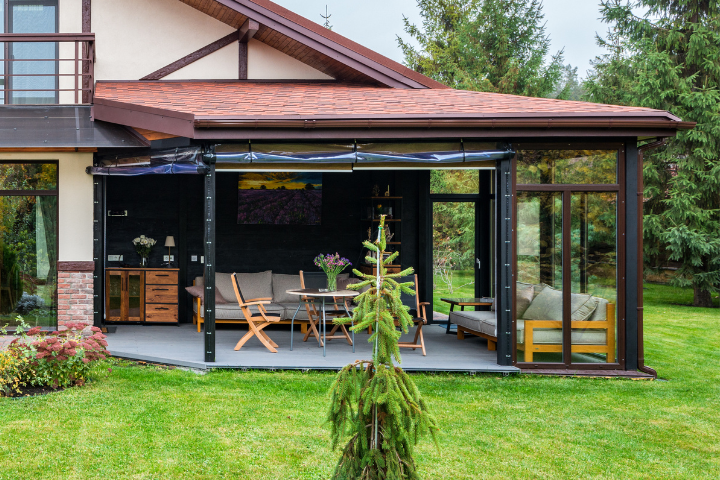
How it Affects Your Backyard
A sunroom will definitely increase your living space, yet it will inevitably take up space in your backyard. Therefore, depending on the size of your property, you risk having a home that’s too big for the land on which it sits.
Another important factor: A high-end sunroom will revamp the look of your home as well as its resale value. In fact, the bigger the house, the higher its real estate value.
However, if you decide to build a sunroom to eventually increase your home’s resale value, don’t linger on it as most sunrooms have a 25-year lifespan, tops.
What impact will a sunroom or veranda have on your home’s market value?
It’s a hard tell. What’s for sure is, it’ll definitely increase your home’s living space, but it’ll also increase your heating bill during the winter and air conditioning costs during the summer.
Having a sunroom is thus a double-edged sword. On one hand, it increases your property’s market value or may convince a potential buyer to sign an offer to purchase. On the other hand, it may come with a load of negative consequences:
Water leaks over time
Defaulting on approvals (local authorities, homeowners association)
Hidden defects
As a result, building a sunroom solely on the premise of increasing your home’s market value isn’t necessarily the best way to go.
Choosing Between a Sunroom or Veranda
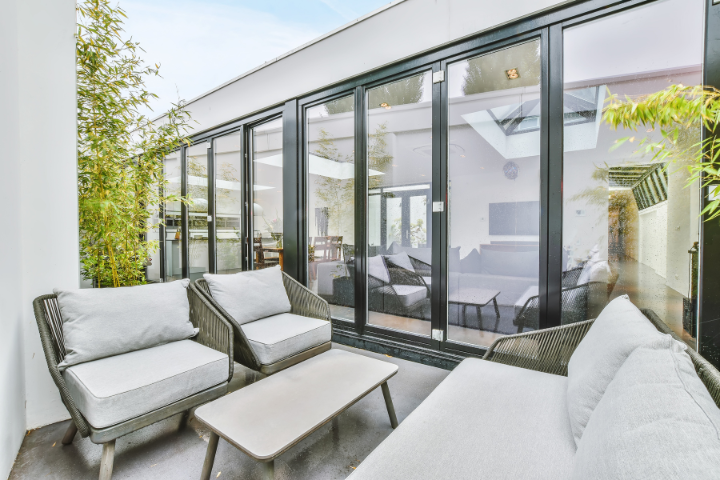
It’s a rather straightforward question when it comes to choosing between a sunroom or a veranda: Why are you looking to build an extension? If it’s to benefit from the sun while being in a screened-in enclosure, stop looking and go with a veranda.
Why? Because between June and August, you’ll enjoy about 252.7 hours of sunshine per month. Fall through winter, during November, December, and January, the amount of sunshine dips to about 89.5 hours. Therefore, working with a typical December day in Eastern Canada, it’s about 8 hours and 38 minutes of daylight, meaning you have about 10 days worth of sun per month. Knowing ahead of time that you won’t sit in your sunroom every day, it’s best to stick with a veranda.
On the other hand, if you already know that this extension will double as additional living space, meaning a whole new room that you intend on using during the wintertime, building a sunroom is definitely the best option.
Three-Season Sunroom: A Happy Medium
A 3-season sunroom has so many benefits that shouldn’t be overlooked:
It’s cheaper
Used spring through fall
Can be heated with space heaters (be mindful of condensation)
During the summer, a sunroom can swiftly turn into a mosquito-feeding frenzy. Therefore, we highly recommend installing screens. Moreover, during a rainy spring season, mosquitos aren’t a rarity.
Get 3 quotes for your renovation project
RenoQuotes.com can help you get quotes from a general contractor. By submitting your project, we’ll put you in contact with top-rated contractors. Fill in the form on the homepage (it only takes a few minutes) and get estimates from trusted professionals.
Dial 1-844 828-1588 to speak with one of our customer service representatives.
Last modified 2024-04-17
Looking for something else?
Related articles
The latest industry news, interviews, technologies, and resources.
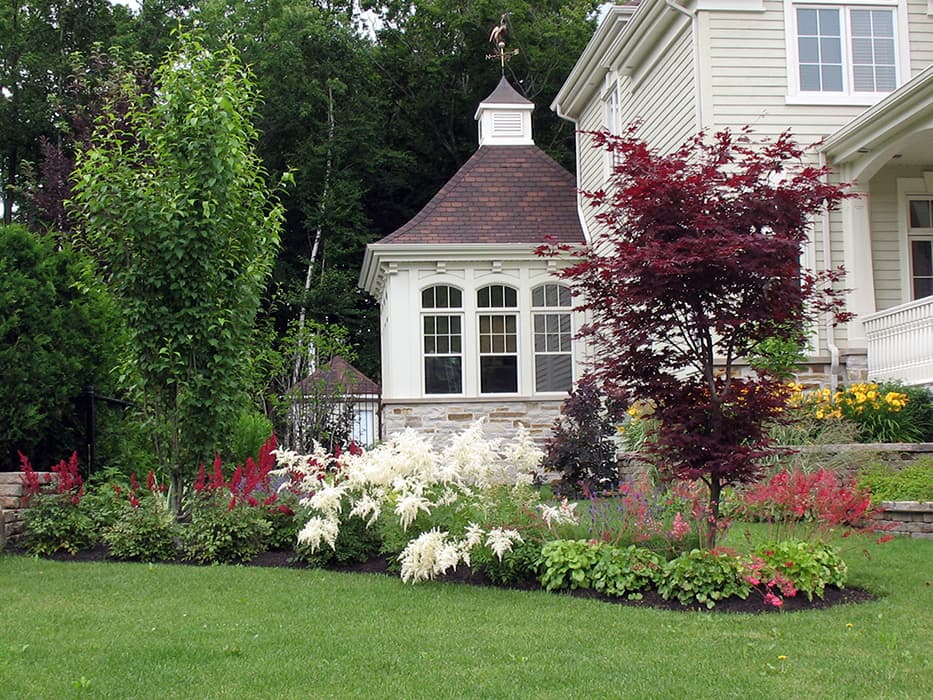
Léa Plourde-Archer • 25 Jan 2024
By working on your home's landscaping, you are essentially embellishing your surrounding environment. Although we tend to spend most of our time inside the home, areas located outdoors are just as important, especially when we like to enjoy good weather.

RenoQuotes.com • 07 Nov 2023
Your home is important, providing a place to nest, offering shelter to loved ones and giving you a space to rest your head. Of course, to make sure your house is in good working order, you need to keep everything in good shape while working with the best materials.
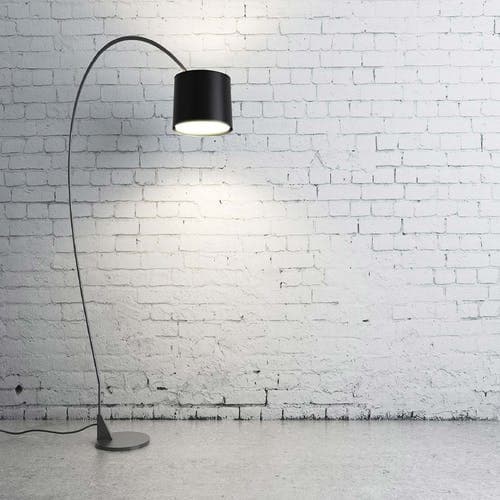
RenoQuotes.com • 07 Nov 2023
Are you looking to give your interior brick wall a new coat of paint to offer a more modern look or integrate it into your brand-new decor? Here are the steps to follow to make this project successful.

N/A • 07 Nov 2023
Hello, and welcome back to our monthly recap of the best articles about interior design, home decor and renovations found on the internet! As spooky October sadly comes to an end, it’s time to look back at the past weeks and search for some interesting reading content for you, our readers.

RenoQuotes.com • 07 Nov 2023
A home extension is a significant undertaking, no matter how you look at it. It calls for solid technical expertise and extensive design know-how. Learn why an architect’s expertise is indispensable to building a well-designed home extension.